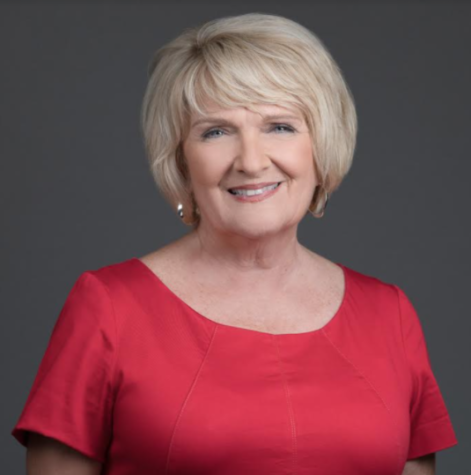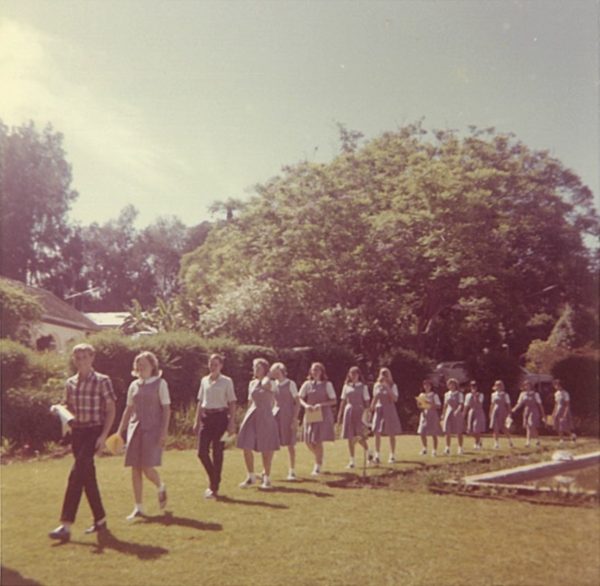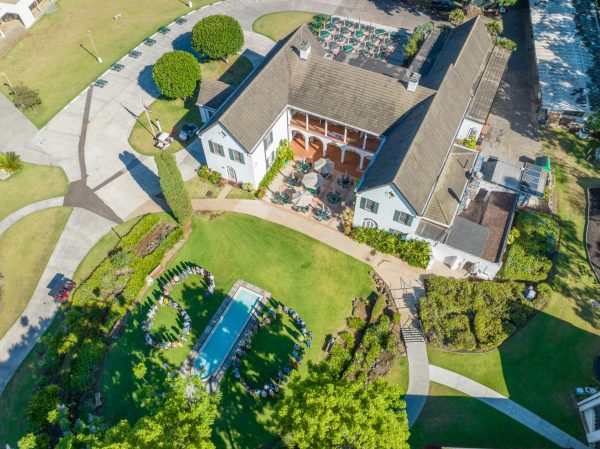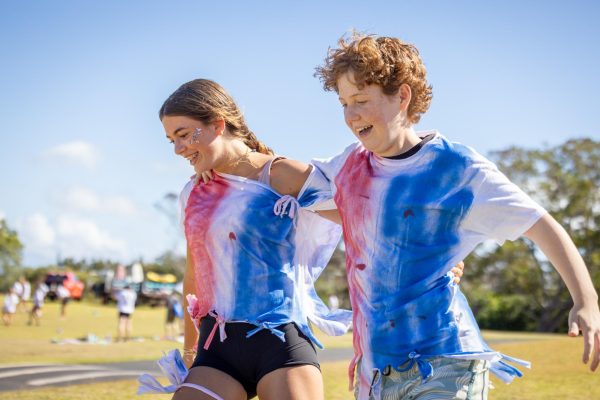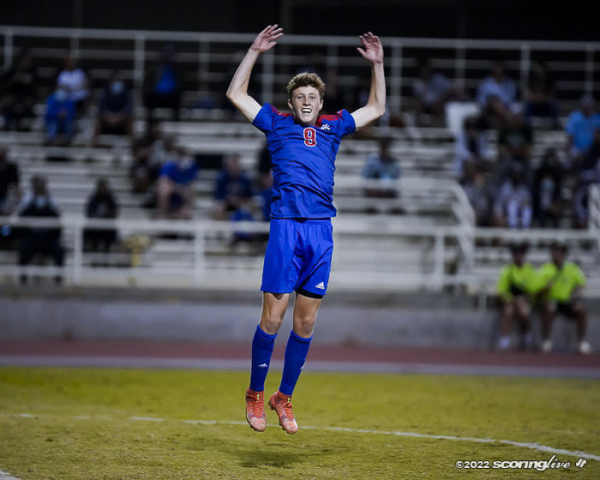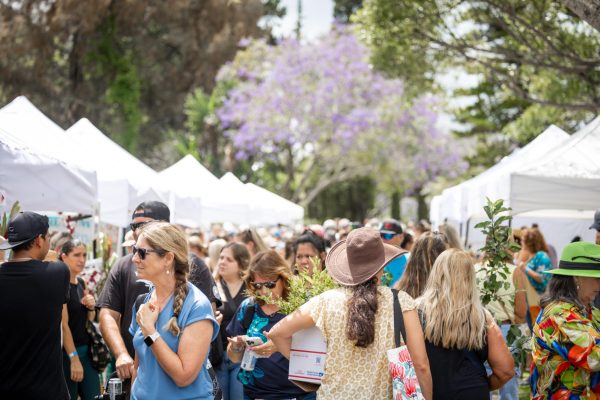COVID-19: Behind the Scenes
It’s only the beginning of 2022 and the infamous Omicron variant of the coronavirus has largely spread, especially within Maui county. As of late January, there have been a total of 56 hospitalized Omicron patients, ultimately surpassing Delta’s hospitalization levels with a high of 41 patients at Maui Memorial Hospital (Maui Now). As the spread of Omicron continues during the New Year, it’s clear to our Seabury Ohana that we need to not only protect ourselves, but protect our friends, our family, and our teachers. In order to gain a better understanding of Seabury Hall’s continued efforts to keep us safe, the Seabury Tides interviewed our Head of School, Mrs. Madden. This interview has been edited for clarity:
How has coronavirus impacted your Seabury Hall Community?
I think we’ve been really lucky…In the very beginning we were “stay six feet away!” and “move out of the way!” [But now,] we’re getting better at everything that we’re doing. We understand the right masks, and we’re doing testing, but I’ve definitely seen people I know worried, scared, not wanting to travel, not wanting to do things. Things that they would get a lot of joy from, they don’t do because they don’t…want to get it (coronavirus). They don’t know what the impact is going to be. For some people, it’s pretty mild. Other people not so much. Every decision we make is [asking]…what’s best for Seabury? How best can we do this? Or how can we make this happen? Or should we make it happen? So I think that’s frustrating and that puts a lot of stress on teachers [and] on staff,… because you can’t just move forward…[Overall,] I’ve seen people be more anxious and more stressed and more hesitant to do things than ever before.
Do you think that we’re taking all of the necessary precautions to stay as safe as possible?
I’d like to think we are…In the past six months or so…the whole response to coronavirus has been very divisive. I think in the beginning everyone was saying, “lock em down,” “masks! Stay six feet away, six feet apart! Do everything we can!” and then eventually people were like, “ah well, okay.” We really thought by August we’d be able to say “no more masks!” And then… Delta. I even sent a survey out to teachers: When we come back in January, how ‘bout we go no masks outside? (laughs) And then…Omicron. We think we’re doing the best we can:…we’re doing more testing, we changed the masks, and we’re continuing with all of the things that have worked. Unfortunately, this is very different from 2020 and 2021.
Do you have any insight as to how the staff is particularly impacted or how that may differ from how students might be feeling?
Can I speak to the students? I can’t profess to know, but I think that students are feeling a loss. Of the things that they could, would, should, want to, expected to be doing, and can’t. I think that there’s anxiety about that. I don’t think students have the anxiety that, “Oh my gosh, I don’t want to get Covid,” [instead,] I think students worry about their families: “Okay, I’m at school. I’m fine, I feel good, I’m young and healthy but I’m not going to be able to go see my Aunt or my Grandmother or my…Dad! Maybe [they have] something going on that I have to be super careful.” I think we all feel the same way about that. I think teachers and staff feel that also but I think for students there’s more of that disappointment. There’re so many times we have to say no…[and] we’re trying to find ways to say yes…How can we say yes? It’s not what we would normally do or maybe what’s been done in the past or the expectation, but how can we say yes and make this work?
As COVID restrictions begin somewhat lifting, what events are we excited to start hosting more of at Seabury Hall?
…Everything…Right now we are planning a full Seabury graduation with the tent and we’re still going to control the number of guests like you can’t bring 25 of your close personal friends, but for seating inside the tent, we’re saying six guests for each graduate. So that still brings us with 80 graduates…times six…plus the faculty, that brings us to well over five hundred people. I know. But it’s still outside…[where] there’ll be ventilation and so we’re planning on doing the luau [and] we’re planning on doing baccalaureate. So right now we are in plans of making all of that happen with the understanding that at some point we might have to pull back. The good news is we know how to do it. If we had to condense graduation, if we had to do it in a different way, we know we can do it.
So we’ve done one graduation with no parents in 2020 which was really hard for that class [missing] their spring [until] they had graduation. In-person. Last year we had the graduation in-person [with] parents and some schools didn’t have that so the fact that we could have the parents there was really good. So this year we’re [waiting to see] whether or not we have to be masked. Somebody said, “Are you going to order masks for the graduation?” and I’m [thinking,] “I don’t want to!” I would really like it to be that they don’t have to wear masks. Maybe we’ll be at that point by the end of May.
What else are we talking about in April? You know, all of the things that have normally been part of the tradition in the spring, we’re gonna try to do. He Ha’upu Aloha: we’re gonna do that. And ironically, last year we did it in the gym and…it really worked out well! Some of the changes that we’ve had to make have actually been better…because parents could come and see it. We could live-stream it. We weren’t dealing with the weather. There were so many things that made it really nice so we’ll probably do it the same way and just maybe have more parents in the bleachers than we had before.
Regardless of COVID, we were wondering how you would hope for our campus to look in the foreseeable future?
Since I got here, I haven’t seen a full Seabury normal year. I got here in 2019 and by February, we were talking about COVID. And so I haven’t seen a lot. I mean I think we’ve done the best we could with what we could in different things. But,…I mean, even doing Orientation Day was great, it was fun, but we still had to isolate the fifth and sixth graders because they couldn’t get vaccinated so we really wanted to protect them as much as possible. I think it would be really awesome to be able to plan events without having to worry about COVID. I think it would be fun to say, “Hey, let’s do this,” and just do it. There are so many things here at Seabury that have been part of the school culture that [we] just can’t do. I mean, it might be nice to have a normal Halloween and not have to have a drive-thru, but they were pretty awesome. You know? They were pretty awesome.
Do you have anything on the COVID situation with the fifth and sixth graders and how it’s impacting the fifth graders, especially since they’re so young?
Actually,…I don’t think the fifth graders really even think about it. They go to P.E. and they have their art class and they go to tech,… [and] they’re mingling with the sixth-grade. When we designed the fifth-grade curriculum, we designed it so that the fifth and sixth…kind of clump together in those two-year groups and there is a lot of cross-over. But, I don’t think it’s really impacted them as much. They love that they can come to lunch first during COVID [and] there’s a good percentage of them vaccinated, but I think that they’ve fared really really well together and in the opportunities that they’ve had at Seabury. And I think next year that we’ll be able to do more with them because we just didn’t know how this year was going to be for all of us.
Also, being able to have them in person is really great, so they can talk to each other.
[Being] in person is huge. Some of these kids who, in the fifth grade, have not been in school since third grade. So when you think about it, they came in in fifth grade [and] their whole fourth grade and half of their third grade, from March 2020, they were either online, in pods, [or] in hybrid learning, depending on where they came from. And that’s a lot of re-socialization. How do you talk to people? How do you hang out? How do you play with your friend? In fifth grade, you’re like, “Hi! Wanna be my friend?” And that’s how it works, but they didn’t even have that. So, I think that was really important for them to really bond as a class. Being the first fifth grade here at Seabury is kind of special for them. As they move through the grades, it’ll kind of be interesting to see how they grow. I haven’t seen anything that’s really impacted them, any more than it would [in] any other school.
For students who are either routinely exposed or who are doing half in-person or half online: Do you have any advice or want to talk about the resources available to them if they are struggling?
I think the most important thing is that they have to take advantage of the extra help block. They can’t just be a fly on the wall. You can’t just sit at your computer, turn [it] on and listen to your class, because that’s just passive. The option is: a lot of the teachers are definitely recording class so that students can re-watch the class…but it’s not the same…Most of the teachers can even say, “Let’s talk at 3:30 and I’ll re-explain it to you.” If they’re quarantining or they’re in exposure, they have to be proactive, they have to be there, they should be engaged. We’re keeping the Google Meets open,…we’ve shortened the quarantine time [and] changed the sick policy. [In the end,] we’ve been trying to get students back quicker…[because] a 10-day quarantine is insane. And this particular strain seems to go through a little bit more quickly, so we’re hoping that the idea is to get everybody back on campus. But, I think students have to take on a share, whether you’re here or not. You have to advocate for yourself.
How are you doing in general?
Me? Good days and bad…I think we all feel really disconnected from students because of this (*points to facemask*). It’s probably the most difficult thing I’ve had to do in my career. I mean, I was an hour from New York City during 9/11. In one school [where] I was working, there were two neighborhood shootings literally there. This is harder than those because those were isolated moments, [where] you responded at the time [and] you did what you needed to. [Ultimately,] people were moving forward, saying, “Oh my gosh, that was a terrible thing that happened. But, here’s what we’re doing now.” [With COVID] it’s always heavy. And it’s heavy on the teachers too. We are 5 hours from anywhere. I mean, unless you have family on other islands, you are five hours from the rest of the world. And I think, for a lot of our teachers and our students, not being able to see family [is hard]. You can’t just get there. But there are days. There are days that are really rough.
